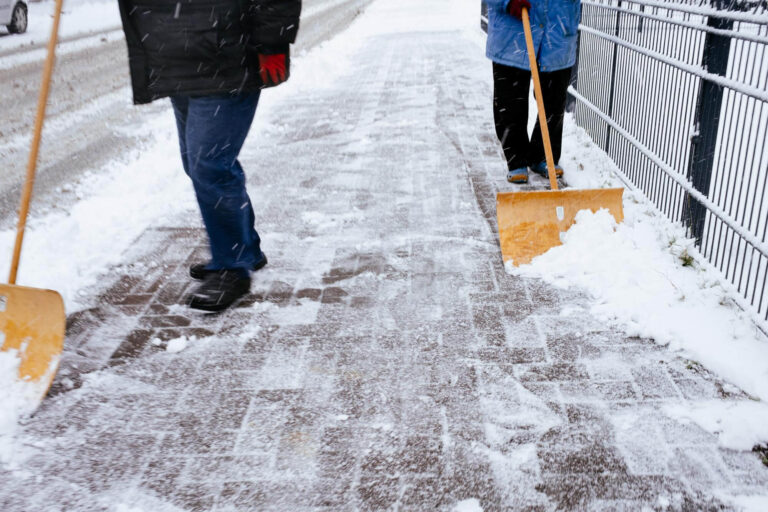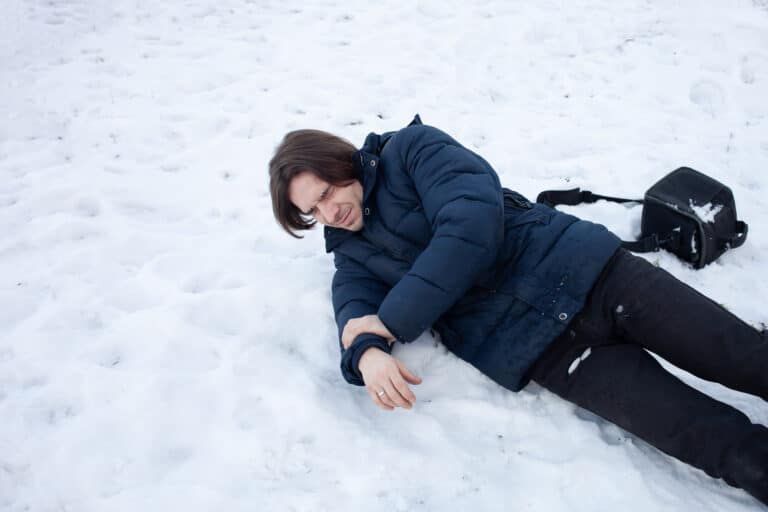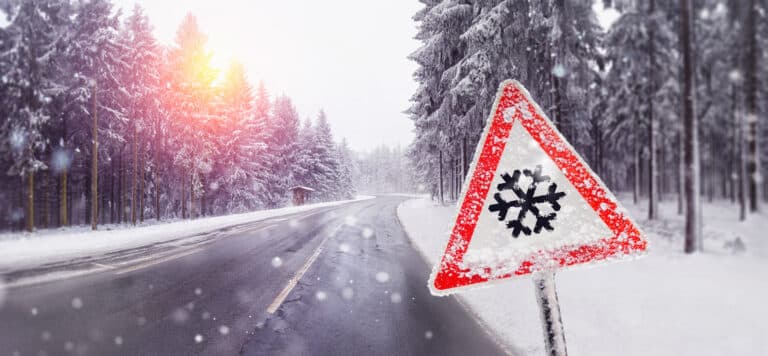Black ice, often called “invisible ice,” is a thin layer of ice that sometimes occurs on roads, sidewalks, or other surfaces. It gets its name because it blends seamlessly with dark pavement, making it almost impossible to see. Black ice typically forms during clear, cold nights when temperatures drop below freezing. It develops when dew or moisture freezes or when melted snow refreezes, leaving a slippery and dangerous surface.
What makes black ice so hazardous is its stealth. Unlike snow or thick sheets of visible ice, black ice provides no obvious visual cues, catching pedestrians and drivers off guard. These unexpected slips or skids can lead to serious injuries, such as broken bones, concussions, or even worse. For pedestrians, even a moment of carelessness on black ice can result in a painful fall.
How to Spot Black Ice
Though black ice is difficult to see, there are some clues to watch for:
- Shiny Patches: Look for glossy surfaces on sidewalks or roads, especially in shaded areas or places where water tends to pool.
- Cold Spots: Be extra cautious in low-lying areas, bridges, or overpasses, where surfaces often freeze faster than their surroundings.
- The Weather Report: If temperatures hover around freezing or there’s frost in the morning, there’s a good chance black ice has formed–especially if it rained or snowed recently and was above freezing the day before.
Tips to Avoid Black Ice
To reduce your risks of dangerous encounters with black ice, consider the following:
- Check Weather Updates: Stay informed if freezing conditions are predicted, and plan to leave with extra time for cautious travel.
- Walk Safely: Wear shoes or boots with good traction. Keep your steps short and avoid rushing. Walk like a penguin if necessary, slowly shifting weight over your front leg.
- Illuminate Your Path: Carry a flashlight if walking at night, as some icy patches may only glimmer under light.
- Use Salt or Sand: If black ice is near your home, spread salt or sand generously for traction.
While black ice is common to form, property owners still have a duty of care to keep their walkways clear and safe. If you’ve suffered a slip-and-fall accident on black ice due to a property owner’s negligence, you may be entitled to compensation for your medical expenses and any other losses incurred. Contact our experienced personal injury attorneys today to discuss your case and explore your options.








